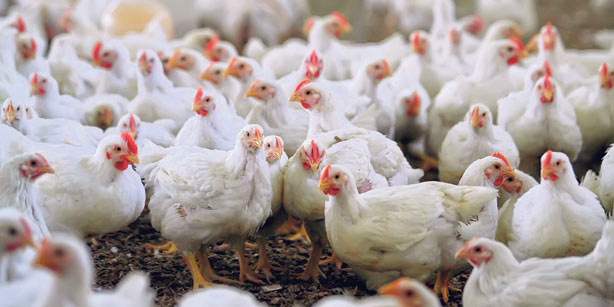Poultry Producers in Brazil Want Farmers to Grow More Corn

Poultry producers in southern Brazil are concerned about the impact of tight corn supplies and high prices on their bottom line. The safrinha corn crop in Brazil, which accounts for nearly three quarters of Brazil’s total corn production, has been severely impacted by a historic drought and freezing temperatures. The result has been record high corn prices and squeezed profits.
The Union of Poultry Producers and Industries in the State of Parana (Sindiavipar) is holding a series of meeting with its members to develop incentives for farmers in the state to increase their full-season corn production.
Full-season corn production has been declining for years as farmers prefer to plant their soybeans first and then plant a second crop of corn. Domestic corn prices are near record highs making full-season corn more profitable than soybeans, but the problem is if a farmer plants full-season corn, he cannot plant a second crop of soybeans because soybeans are not allowed to be planted after December 31st.
Even though a single crop of corn may be more profitable than a single crop of soybeans, farmers can make more money overall if they plant a crop of soybeans first followed by a second crop of corn. Farmers start planting full-season corn in August or September depending on the weather and the full-season corn is harvested starting in January. The second corn crop is planted in February and won’t be harvested until next June or July.
In order to overcome the trend for fewer full-season corn hectares, poultry producers and industries are offering forward contracts for corn at very attractive prices to try and incentivize farmers to at least plant some of their farm to full-season corn.
The poultry sector is also in the process of importing more corn from Paraguay and Argentina to fill the void until new crop corn is available starting in January. From January through the end of June, 71% of Brazil’s corn imports came from Paraguay, 28% came from Argentina, and 1% from the United States. The state of Parana imported 58.7% of the corn thus far this year followed by Santa Catarina with 23% and Rio Grande do Sul with 17.4%.
One of the problems with imports is the fact that the logistics and ports in Brazil are geared for exports and not imports. Importing corn this time of the year will also cause congestion at the ports because this is when fertilizers are imported into Brazil.
Parana is the largest poultry producing state in Brazil and the poultry sector directly employees 85,000 and for every direct job there are 17 indirect jobs connected to the poultry sector according state employment data. Approximately 10% of the population of the state is directly or indirectly impacted by the poultry sector.
Farmers in Parana may start planting their soybeans on September 10th, but rainfall will be needed to replenish the soil moisture after one of the driest periods in 80 years. If they receive the needed rainfall in time to start planting in September, the soybean planting should be finished by the end of October. This would allow for the soybeans to be harvested in February and the safrinha corn planted in February and then harvested in June and July.
Read also
Wheat in Southern Brazil Impacted by Dry Weather and Frosts
Oilseed Industry. Leaders and Strategies in the Times of a Great Change
Black Sea & Danube Region: Oilseed and Vegoil Markets Within Ongoing Transfor...
Serbia. The drought will cause extremely high losses for farmers this year
2023/24 Safrinha Corn in Brazil 91% Harvested
Write to us
Our manager will contact you soon



